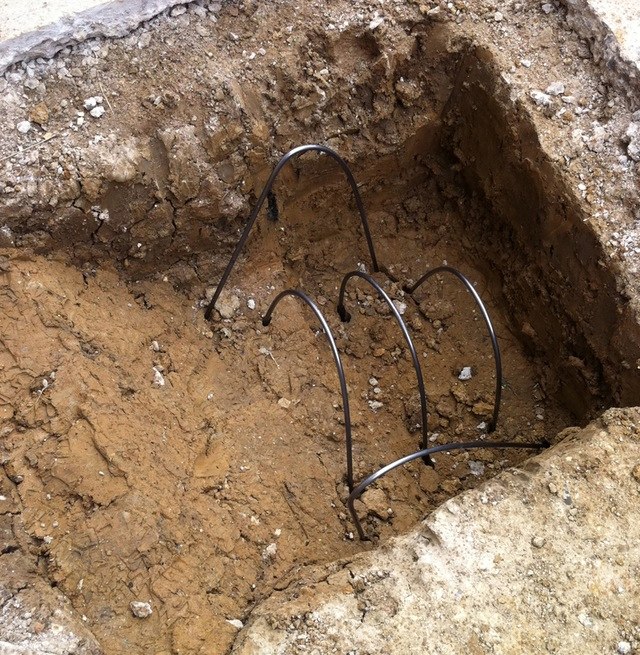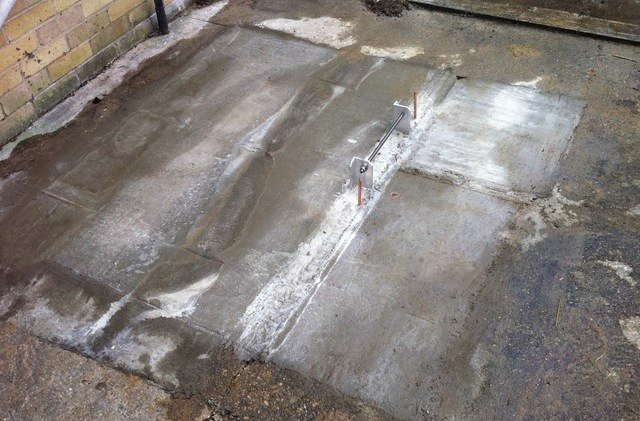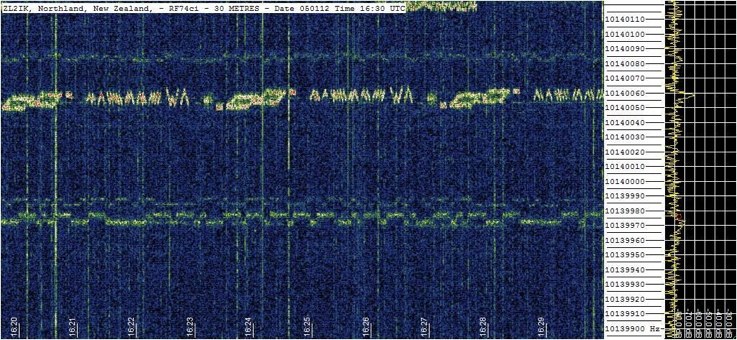Commissario
I've been asked a few times to start an *** official *** amateur radio thread so after a few false starts I'm hoping this will work.
I know a few people on here have got (or have had) amateur radio licenses and so perhaps we can get some chat going here, what you do, what you've done and what you enjoy about the hobby.
When mentioning radio as a hobby, a common response is 'haven't you heard of the internet or telephone or skype' etc but that's not really valid. For me the thrill is being able to communicate with someone in another country or another continent without assistance. With a landline phone you're relying on a network of cables and satellites, with a mobile phone you only transmit a very low powered signal just a couple of miles.
If I talk to someone in Russia or America or New Zealand, I'm doing it using the equipment I have in my house unaided. I don't need to have my signal repeated by an intermediate station, I don't rely on satellites (although there are amateur radio satellites in orbit), the signal leaves my radio shack, goes through my aerial and is received by the other person without any assistance. It's all me!
It's not CB. It's a lot more than CB ever was.
To add some pictures, I'd like to document the work that was done here earlier this year where, with the help of some friends I put up a new mast and aerial.
We started off by lifting an area of concrete patio in the garden, this was hard work with nothing but a mini-kango and a masonry drill.


That took a couple of hours to clear and then we dug a hole for the base.

Those pipes were going to potentially be a problem, I had to work out a way of sleeving around them to protect them.
A week later we carried on, I'd hired a skip and a mixer.
We decided to move the mast further away from the house than originally planned and so we packed the earth back around those pipes, extended and deepened the hole.

It took a few wheelbarrows to get the rubble loaded into the skip.

We then knocked up our own rebar to strengthen the concrete and fixed it in the hole.


We then started filling the hole with concrete.

Here's the hole partly filled with the base plate for the mast all ready to be mounted in place. You can see the baseplate on the right, it's two verticals with a crossmember with a couple of pieces of rebar through it. The edges will stick out of the concrete providing a base and hinge for the mast to tilt over.

Now you can see the hole is nearly full and the baseplate is suspended in the concrete.

The base was all floated off and ready to be covered for the night for the concrete to go off.

The next day I took the cover off (it had chucked it with rain overnight) and this is how it looked. Not the most attractive but this was a few months ago and the base colour has blended in now with the concrete around it.

I stood one section of my mast on the base later in the day to see how it looked.

On the subject of the mast, I bought four sections, each 2.5m long. The first section was pre-assembled and the other three were in Mechano format, ie I had to assemble them myself. Here's the first section I put together, it's all assembled but not tightened yet.

My aerial was also in pieces. Here it is pre-assembly

And here it is an hour later, partly assembled.

To see how the mast was going to look, I put two sections together and stood them on the concrete. I thought it was good, my wife wasn't so keen!

Over the next week or so I put together the rest of the sections and here they are, three are fixed together and the final one is laying by the side. The picture was taken out of an upstairs window looking down.

The following weekend my friends were back again and working on the bracket to support the mast - Because it was going to be further away from the house than originally planned we had to change things a little.


Once the bracket was all done, we lowered the mast back down (at this point there were just three sections and it was easy for one person to raise and lower it) and fixed the final section in place along with the aerial rotator and stub mast.

This extra section and weight added so much leverage though that it was difficult for the five of us to raise it. We got it in place though and decided that we'd leave it there until the following weekend so here's the first shot you get of all four sections, rotator and stub mast in place.

Another week passed and we were getting close to my deadline - There was a big amateur radio contest at the start of November which I wanted the aerial sorted for, we had a couple of weeks to spare. We started off by making holes to mount the winch. I wanted the mast to be raisable and lowerable by one person so a winch is essential.

We fitted a pulley to the mast bracket as well and fixed the winch in place. We then finished off the aerial and fixed it to the stub mast.

It was then time to raise it all back up again. Although the winch was now in place, we didn't want to stress the anchors too much as the chemical wouldn't have had time to go off properly so although we used the winch, it was largely raised by hand again and it was difficult.
Here's the final finished mast and aerial having just been raised. The restraining bracket is being fixed in place.

That was back at the end of October and since then I've had the mast up and down a few times for various things to be done. Once of the things done was to fit around 100 cable ties to it pointing upwards to dissuade the local Starling population from using it as a perch. I don't mind the birds sitting on my aerial but my wife isn't so keen on the mess they make underneath it!
This weekend we lowered the mast again and this time I took a video of it being raised back up after we replaced the pulley (HD version on Youtube).
The aerial really is the most important part of an amateur radio station. I've worked the world using just a piece of wire dangled down the garden but it's so much easier with a good aerial. My first contact with the new beam was with a station in Hong Kong, a new country for me.
So who else in these fine forums has an interest in radio?
I know a few people on here have got (or have had) amateur radio licenses and so perhaps we can get some chat going here, what you do, what you've done and what you enjoy about the hobby.
When mentioning radio as a hobby, a common response is 'haven't you heard of the internet or telephone or skype' etc but that's not really valid. For me the thrill is being able to communicate with someone in another country or another continent without assistance. With a landline phone you're relying on a network of cables and satellites, with a mobile phone you only transmit a very low powered signal just a couple of miles.
If I talk to someone in Russia or America or New Zealand, I'm doing it using the equipment I have in my house unaided. I don't need to have my signal repeated by an intermediate station, I don't rely on satellites (although there are amateur radio satellites in orbit), the signal leaves my radio shack, goes through my aerial and is received by the other person without any assistance. It's all me!
It's not CB. It's a lot more than CB ever was.
To add some pictures, I'd like to document the work that was done here earlier this year where, with the help of some friends I put up a new mast and aerial.
We started off by lifting an area of concrete patio in the garden, this was hard work with nothing but a mini-kango and a masonry drill.


That took a couple of hours to clear and then we dug a hole for the base.

Those pipes were going to potentially be a problem, I had to work out a way of sleeving around them to protect them.
A week later we carried on, I'd hired a skip and a mixer.
We decided to move the mast further away from the house than originally planned and so we packed the earth back around those pipes, extended and deepened the hole.

It took a few wheelbarrows to get the rubble loaded into the skip.

We then knocked up our own rebar to strengthen the concrete and fixed it in the hole.


We then started filling the hole with concrete.

Here's the hole partly filled with the base plate for the mast all ready to be mounted in place. You can see the baseplate on the right, it's two verticals with a crossmember with a couple of pieces of rebar through it. The edges will stick out of the concrete providing a base and hinge for the mast to tilt over.

Now you can see the hole is nearly full and the baseplate is suspended in the concrete.

The base was all floated off and ready to be covered for the night for the concrete to go off.

The next day I took the cover off (it had chucked it with rain overnight) and this is how it looked. Not the most attractive but this was a few months ago and the base colour has blended in now with the concrete around it.

I stood one section of my mast on the base later in the day to see how it looked.

On the subject of the mast, I bought four sections, each 2.5m long. The first section was pre-assembled and the other three were in Mechano format, ie I had to assemble them myself. Here's the first section I put together, it's all assembled but not tightened yet.

My aerial was also in pieces. Here it is pre-assembly

And here it is an hour later, partly assembled.

To see how the mast was going to look, I put two sections together and stood them on the concrete. I thought it was good, my wife wasn't so keen!

Over the next week or so I put together the rest of the sections and here they are, three are fixed together and the final one is laying by the side. The picture was taken out of an upstairs window looking down.

The following weekend my friends were back again and working on the bracket to support the mast - Because it was going to be further away from the house than originally planned we had to change things a little.


Once the bracket was all done, we lowered the mast back down (at this point there were just three sections and it was easy for one person to raise and lower it) and fixed the final section in place along with the aerial rotator and stub mast.

This extra section and weight added so much leverage though that it was difficult for the five of us to raise it. We got it in place though and decided that we'd leave it there until the following weekend so here's the first shot you get of all four sections, rotator and stub mast in place.

Another week passed and we were getting close to my deadline - There was a big amateur radio contest at the start of November which I wanted the aerial sorted for, we had a couple of weeks to spare. We started off by making holes to mount the winch. I wanted the mast to be raisable and lowerable by one person so a winch is essential.

We fitted a pulley to the mast bracket as well and fixed the winch in place. We then finished off the aerial and fixed it to the stub mast.

It was then time to raise it all back up again. Although the winch was now in place, we didn't want to stress the anchors too much as the chemical wouldn't have had time to go off properly so although we used the winch, it was largely raised by hand again and it was difficult.
Here's the final finished mast and aerial having just been raised. The restraining bracket is being fixed in place.

That was back at the end of October and since then I've had the mast up and down a few times for various things to be done. Once of the things done was to fit around 100 cable ties to it pointing upwards to dissuade the local Starling population from using it as a perch. I don't mind the birds sitting on my aerial but my wife isn't so keen on the mess they make underneath it!
This weekend we lowered the mast again and this time I took a video of it being raised back up after we replaced the pulley (HD version on Youtube).
The aerial really is the most important part of an amateur radio station. I've worked the world using just a piece of wire dangled down the garden but it's so much easier with a good aerial. My first contact with the new beam was with a station in Hong Kong, a new country for me.
So who else in these fine forums has an interest in radio?




 .
. 







